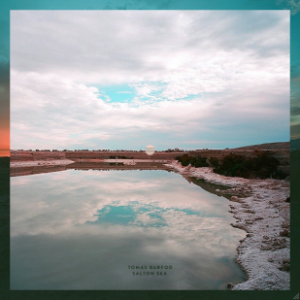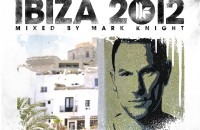CHOICE CUT
Tomas Barfod / Salton Sea
CD/ Digital / Vinyl
Friends of Friends / Released May 2012
The age old in joke about your average four piece band comprising of three musicians and a drummer seems wholly unfair in many instances. Phil Collins made a pretty big name for himself with percussion. And then we have Tomas Barfod, skin-smasher of impressive Danish outfit Who Made Who, and a guy who’s knowledge and understanding of sound is unquestionably impressive.
As was proved when we reviewed Broken Glass earlier this year- arguably the most accessible and universally appealing piece of music on this, his latest full-length effort (read our words on the single by clicking here). Realistically though the reasons to recommend the artist in question go well beyond that one track though, as is evidenced in both his oeuvre and Salton Sea. Apparently the new album is inspired by urban decay, though there’s not a hint of depressing, dystopian futurism here, which can only be a good thing when we’re all trying to stay in the summer spirit. Instead it’s an eclectic combination of various electronic styles that work very well indeed when put together in one package.
Fans of We Love and Prommer and Barck take note then, at its most beautiful, innocent, and utterly beguiling we have Till We Die, a toybox symphony of child-like xylophone melodies, staccato, lunging kicks and the filtered, airy vocals of Swedish songstress Nina Kinert. In contrast opener D.S.O.Y. is a main room-filling, proggy-edged builder complete with chimed melody and ongoing miniature crescendos courtesy of compact snare rolls. And then Nighthawke fits in more with a Cobblestone Jazz ethic, all rapidly reverberating arpeggios and electro edges, whilst Lydia Ainsworth’s ethereal words add an air of mystery, and are not unlike the desperate and distant tomes of one Kate Bush.
What’s most impressive about the collection is that there’s an overwhelming feeling of power here, with most of the tracks certainly catering for club tastes as oppose to the usual abrasive conceptuality inherent in ‘electronica’ at its most fashion conscious. Of course we’re not talking about bass-bin killing relentless techno, but rather the kind of tunes that, with a few exceptions, could work within a variety of sets at a range of venues. Like most of the best soundtracks these days, it’s dance music in the most fundamental way of looking at the term, with the only real consistency being that the beats are, on the whole and when present, four four.






